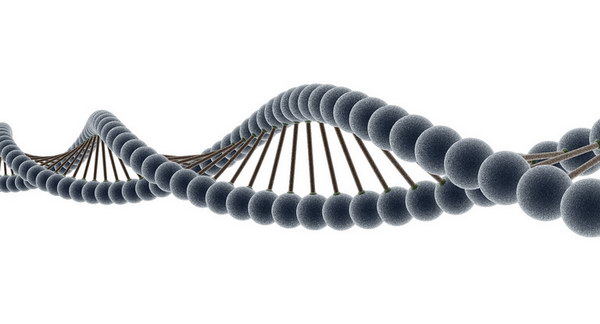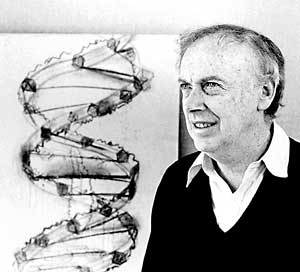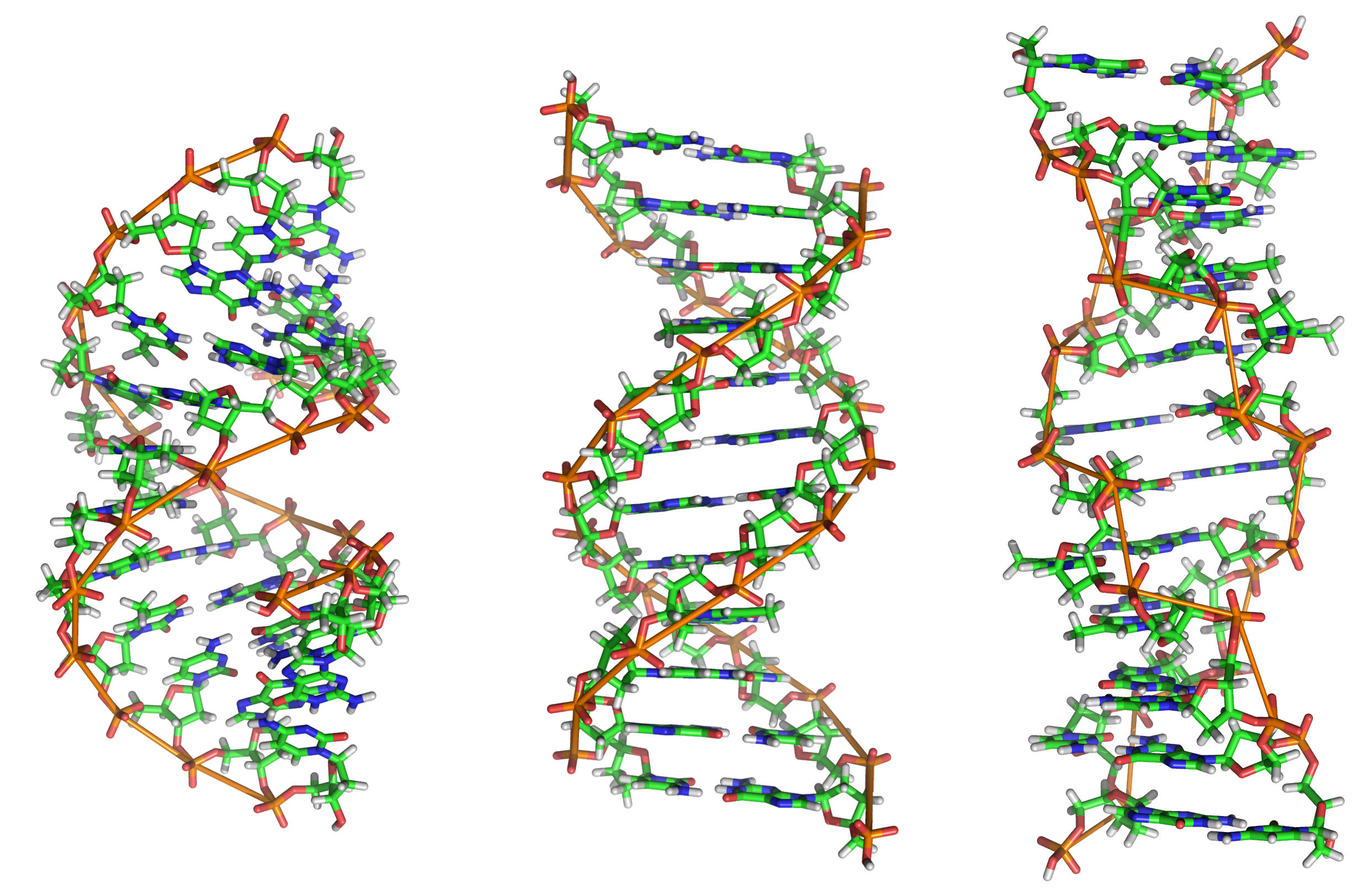Арсланова_Г_А_и_др_Essential_English_for_Biology_Students (1). Kazan federal university
 Скачать 7.01 Mb. Скачать 7.01 Mb.
|
UNIT III. MOLECULAR BIOLOGY OF THE GENE5Text 3.1. DNA Structure■  Essential targets: Essential targets:By the end of this text you should be able to: ● distinguish between a nucleoside, a nucleotide, and a polynucleotide; ● explain how a phosphodiester bond forms; ● discuss the significance of complementary base pairing in DNA. Pre-reading ■ Working in pairs, try and answer the following questions before you read the text. Don`t be afraid of guessing the answers! When you have finished, check your answers by reading the text. Who discovered the structure of DNA? What do you know about a nucleoside and a nucleotide? What shape does a molecule of DNA have? What kind of information does a molecule of DNA contain? Exercise A. Match the words with their definitions:
■ Read the given text and make your essential assignments: T  he description of the double helical structure of DNA (deoxyribonucleic acid) by Watson and Crick in 1953 (see Fact of life) was a landmark in science history. Their discovery sparked off a new era in scientific research which has had, and will continue to have, far-reaching consequences. he description of the double helical structure of DNA (deoxyribonucleic acid) by Watson and Crick in 1953 (see Fact of life) was a landmark in science history. Their discovery sparked off a new era in scientific research which has had, and will continue to have, far-reaching consequences. A polymer of nucleotides Each DNA strand is a polymer made up of nucleotide subunits. Тhe nucleotides join together to form long unbranched polynucleotide chains. Each nucleotide consists of deoxyribose (a five-carbon or pentose sugar), an organic nitrogen-containing base (of which there are four different types), and phosphoric acid. The sugar and the organic base join together by a condensation reaction to form a nucleoside. (A condensation reaction results in the removal of a water molecule.) Another condensation reaction joins the nucleoside with phosphoric acid to form the nucleotide. This bond forms between carbon 5 of the sugar and the phosphate, and is called a phosphoester bond. The organic bases present in DNA are either purines (guanine, G and adenine, A) or pyrimidines (cytosine, С and thymine, T). Purines have a double ring structure; pyrimidines have a single ring structure. Two nucleotides can join together by a condensation reaction between the phosphate group of one nucleotide and the hydroxyl group on carbon 3 of the sugar of the other nucleotide. The bonds linking the nucleotides together are strong, covalent phosphodiester bonds. The process can be repeated so that a polynucleotide chain builds up. The chain has a sugar-phosphate backbone with the organic bases projecting outwards. Each chain has two distinct ends: a 3' ('three prime') end and a 5'('five prime') end. At the 3' end, the carbon 3 of the deoxyribose is closest to the end; at the 5' end, the carbon 5 of the deoxyribose is closest to the end. The double helix DNA consists of two polynudeotide chains coiled around each other to form a double helix. The double helix is held together by hydrogen bonds between pairs of bases in the two chains. The pairings depend on the shapes of the bases (a purine can only bond with a pyrimidine) and on their ability to form hydrogen bonds: Adenine (a purine) pairs with thymine (a pyrimidine), forming two hydrogen bonds (A=T). G  uanine (a purine) pairs with cytosine (a pyrimidine), forming three hydrogen bonds (G = C). uanine (a purine) pairs with cytosine (a pyrimidine), forming three hydrogen bonds (G = C).Complementary base pairing These complementary base pairs are the only ways the bases can bond and join the two nucleotide chains. Thus, the sequence of bases along one polynudeotide chain determines the sequence along the other: an adenine on one chain means there must be a thymine on the other chain at that point, and so on. Complementary base pairing forms the basis of DNA replication and its ability to form messenger RNA during protein synthesis. Complementary base pairing can happen only if the two polynudeotide chains are antiparallel. Antiparallel chains run in opposite directions; one chain runs from 3' to 5', and the other from 5' to 3'. Watson and Crick's model of DNA showed that the base pairs are 0.34 nm apart, and that each complete turn of the helix has ten base pairs. In summary DNA is a double helix made of two polynucleotide chains. Each chain has a sugar-phosphate backbone on the outside with organic bases on the inside. The two chains are held together by complementary base pairing. The chains are antiparallel (the 5' end of one chain lies next to the 3' end of the other chain). ■Glossary of essential terms for you to know
■ Your Essential Assignments I. Quick check I. Distinguish between a nucleoside and a nucleotide. 2. By what type of chemical reaction is a phosphodiester bond formed? 3. If one strand of DNA has the base sequence AATCCG, what will be the corresponding base sequence of bits complementary strand ? II. Fill in the missing words:
III. Use a monolingual English dictionary and give the definitions of the words below: landmark; bond; chain; sequence; to coil. IV. Find English equivalents to the following word combinations:
V. Suggest Russian equivalents for the following word combinations
VI. Fill in the gaps with the words and expressions from the text: DNA consists of two polynucleotide chains … to form a double helix. The description of the double helical structure of DNA was a … in science history. The two chains … by complementary base pairing. Another condensation reaction … the nucleoside with phosphoric acid to form the nucleotide. Purines have a … ring structure VII. Answer the following questions. Use all information given before. Who and when published the first description of the DNA structure? What information did Watson and Crick use for their model? Why did not Rosalind Franklin receive a Nobel Prize? What is each DNA strand made of? What is a condensation reaction? What does each nucleotide consist of? What is the main difference between purines and pyrimidines? What is the main condition for complementary base pairing to happen? Distinguish between a nucleoside and a nucleotide. What type of chemical reaction forms a phosphodiester bond? If one strand of DNA has the base sequence AATCCG, what will be the corresponding base sequence of bits complementary strand? VIII. Read and translate the short text without any dictionary: Fact of life: In April 1953, the biologist James Watson and the physicist Francis Crick published the first description of the structure of DNA, in a letter to the journal Nature. They based their description on a model they had constructed, but they did little experimental work themselves. The information they used for their model came from work carried out by Erwin Chargaff on the base composition of DNA , and X-ray data obtained by Rosalind Franklin, working with Maurice Wilkins at King's College, London. One particularly good X-ray diffraction photograph obtained by Franklin in the winter of 1952-3 gave crucial support to the idea that DNA has a helical structure. Other data from Franklin showed that DNA has two strands, not three or more as some scientists had proposed. In 1962, Watson, Crick, and Wilkins received a Nobel Prize for their discoveries. Tragically, Rosalind Franklin died of cancer in 1958 at the age of 37. Nobel prizes cannot be given posthumously. IX. Food for thought: In 1948 the chemist Ervin Chargaff began using paper chromatography to analyses the base composition of DNA from a number of species. Table 1 shows the types of results may be interpreted to support Watson and Crick’s double-helix hypothesis. What other interpretations could be given?
X.Translate into English using all the active possible: Описание структуры ДНК в виде двойной спирали было поворотным пунктом в истории науки. Это открытие явило новую эру в научном исследовании, которое Кимеет и будет иметь далеко идущие последствия. Реакция конденсации (уплотнения) приводит к отщеплению молекулы воды. Нуклеотиды объединяются и образуют длинные неразветвленные полинуклеотидные цепи. ДНК состоит из двух полинуклеотидных цепей скрученных вокруг друг друга и образующих двойную спираль. Модель ДНК Уотсона и Крика показала, что базовые пары располагаются в 0.34 нм друг от друга. Таким образом, последовательность баз вдоль одной полинуклеотидной цепи определяет последовательность вдоль другой: аденин в одной цепи означает, что в той же точке другой цепи должен быть тимин и так далее. Органические основания, присутствующие в ДНК, являются либо пуринами, либо пиримидирами. |
